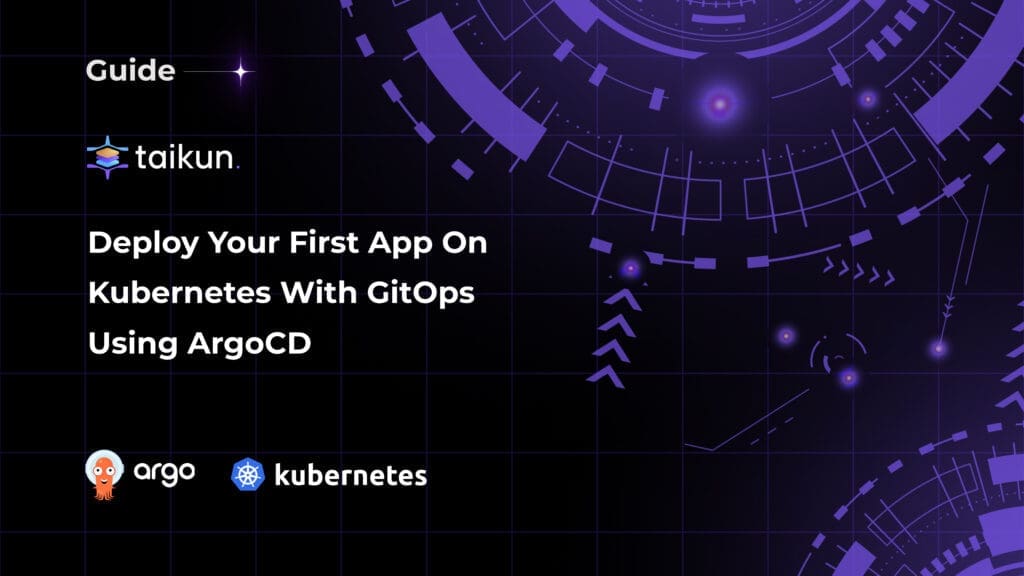
Introduction
In the ever-evolving landscape of cloud-native technologies, managing deployments in Kubernetes clusters has become increasingly complex. Enter ArgoCD, a powerful tool that simplifies and automates the deployment process using the GitOps methodology. This blog post will dive deep into ArgoCD, exploring its features, benefits, and how to get started with it.
What is ArgoCD?

source: Argo readme docs
ArgoCD is an open-source, declarative, GitOps continuous delivery tool for Kubernetes. It automates the deployment of applications to Kubernetes clusters by monitoring Git repositories and syncing the desired state defined in Git with the actual state in the cluster.
Key Features of ArgoCD:
- GitOps Workflow: ArgoCD follows the GitOps principle, where Git repositories are the single source of truth for defining the desired application state.
- Automated Sync: It continuously monitors your Git repositories and automatically applies changes to your Kubernetes clusters.
- Multi-Cluster Management: ArgoCD can manage applications across multiple Kubernetes clusters from a single interface.
- Role-Based Access Control (RBAC): It provides fine-grained access controls for managing applications and clusters.
- Web UI and CLI: ArgoCD offers both a user-friendly web interface and a powerful command-line interface for managing deployments.
- SSO Integration: It supports integration with various Single Sign-On (SSO) providers for enhanced security.
- Audit Trail: ArgoCD maintains a detailed history of all changes and deployments for auditing purposes.
Why Use ArgoCD?
ArgoCD offers several significant advantages for managing Kubernetes deployments:
- GitOps Workflow
ArgoCD implements the GitOps methodology, using Git repositories as the single source of truth for declarative infrastructure and applications. This approach ensures that the entire system architecture is versioned, traceable, and reproducible. - Automated Synchronization
ArgoCD continuously monitors configured Git repositories and automatically updates the Kubernetes cluster to match the desired state defined in the repository. This automation reduces manual intervention and potential human errors in the deployment process. - Multi-Cluster Management
With ArgoCD, you can manage applications across multiple Kubernetes clusters from a single interface. This centralized control simplifies operations for organizations with complex, distributed infrastructures. - Enhanced Security
ArgoCD provides robust security features, including:- Role-Based Access Control (RBAC) for fine-grained permissions
- Single Sign-On (SSO) integration for centralized authentication
- Audit trails for comprehensive logging of all actions and changes
- Kubernetes-Native Architecture
Built specifically for Kubernetes, ArgoCD leverages native Kubernetes controllers and CRDs (Custom Resource Definitions). This deep integration ensures optimal performance and compatibility with the Kubernetes ecosystem. - Declarative Application Definitions
ArgoCD supports multiple config management tools, including Kustomize, Helm, and Jsonnet. This flexibility allows teams to define applications declaratively, promoting consistency and reducing configuration drift. - Visualization and Monitoring
The ArgoCD web UI provides real-time visibility into application deployments, including:- Health status of applications and their components
- Sync status between Git repositories and cluster states
- Detailed deployment history and rollback capabilities
- Scalability
ArgoCD’s architecture is designed to scale efficiently, supporting deployments ranging from small projects to large enterprise environments with multiple clusters and applications. - Rollback and Disaster Recovery
ArgoCD maintains a complete history of application deployments, enabling quick rollbacks to previous known-good states in case of issues. This feature significantly reduces downtime and improves overall system reliability. - Customizable Sync Policies
ArgoCD allows fine-tuning of sync behaviors through customizable sync policies. These policies can automate pruning of resources, self-healing of applications, and controlled propagation of changes across environments.
By leveraging these features, ArgoCD streamlines Kubernetes deployments, enhances collaboration between development and operations teams, and provides a robust foundation for implementing continuous delivery in cloud-native environments.
Getting Started with ArgoCD
Now that we understand what ArgoCD is and why it’s useful, let’s walk through the process of setting it up and deploying an application using the ArgoCD Helm chart.
Prerequisites
Before we begin, ensure you have the following:
- A Kubernetes cluster
- Helm installed
- kubectl configured to communicate with your cluster
Step 1: Install ArgoCD
We’ll use the official ArgoCD Helm chart to install ArgoCD in our Kubernetes cluster.
- Add the ArgoCD Helm repository:
helm repo add argo https://argoproj.github.io/argo-helm - Update your Helm repositories:
helm repo update - Create a namespace for ArgoCD:
kubectl create namespace argocd - Install ArgoCD using Helm:
helm install argocd argo/argo-cd --namespace argocd
Step 2: Access the ArgoCD UI
Once ArgoCD is installed, you can access its web interface:
- Port-forward the ArgoCD server service:
kubectl port-forward svc/argocd-server -n argocd 8080:443 - Open a web browser and navigate to
https://localhost:8080 - Log in using the default admin credentials:
- Username: admin
- Password: (retrieve using the command below)
kubectl -n argocd get secret argocd-initial-admin-secret -o jsonpath="{.data.password}" | base64 -d
Step 3: Deploy an Application with ArgoCD

Now that we have ArgoCD set up, let’s deploy a sample application:
- In the ArgoCD UI, click on “New App”

- Fill in the application details:
- Application Name: sample-app
- Project: default
- Sync Policy: Automatic
- Repository URL: https://github.com/argoproj/argocd-example-apps.git
- Path: guestbook
- Cluster: https://kubernetes.default.svc (in-cluster)
- Namespace: default
- Click “Create” to deploy the application
ArgoCD will now sync the application from the Git repository to your Kubernetes cluster. You can monitor the deployment progress in the ArgoCD UI.
Conclusion
ArgoCD simplifies Kubernetes deployments by leveraging GitOps principles. It provides a powerful set of tools for managing applications across multiple clusters, ensuring consistency, and improving collaboration among team members. By following the steps outlined in this guide, you can start using ArgoCD to streamline your Kubernetes deployments and embrace the GitOps workflow.
As you become more familiar with ArgoCD, you can explore its advanced features, such as custom health checks, resource hooks, and integration with CI/CD pipelines. With its robust ecosystem and active community, ArgoCD is well-positioned to become an essential tool in your Kubernetes deployment strategy.
Are you ready to launch Argo in a few clicks? Try Taikun CloudWorks today. Book your free demo today, and let our team simplify, enhance, and streamline your infrastructure management.




